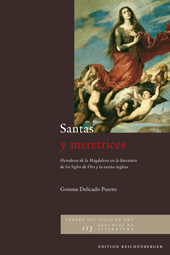|
|||||||||||||||
|
|
|||||||||||||||
|
Este libro resalta textos que han sido soslayados por la crítica y presenta nuevas interpretaciones de obras canónicas del Siglo de Oro mediante el análisis de la representación de María Magdalena en Francisco Delicado, Miguel de Cervantes, Fernández de Avellaneda y Lope de Vega, entre otros. El estudio va más allá de fronteras nacionales y géneros literarios y presta atención a la relación entre lo visual y lo escrito, entrelazando écfrasis y hagiografía. Asimismo, la autora se interesa por el análisis comparativo, examinando el rol de la Magdalena en el teatro de Shakespeare, y contrastándolo con la representación del motivo en el drama aurisecular. En definitiva, a pesar de lo vasto de la bibliografía sobre la santa, faltaba aún un estudio amplio e incisivo que arrojara luz sobre esta crucial figura en la literatura de la alta edad moderna. |
|||||||||||||||
|
|
|||||||||||||||
|
This book focuses on texts previously neglected by critics and presents original interpretations of Golden Age canonical works through the analysis of the representation of Mary Magdalene in Francisco Delicado, Miguel de Cervantes, Fernández de Avellaneda and Lope de Vega, among others. The study goes beyond national borders and literary genres and emphasizes the relationship between visual arts and written texts, interweaving ekphrasis and hagiography. Likewise, the author uses a comparative approach in analyzing the role of the Magdalene in Shakespere’s theater and Spanish Golden Age drama. Despite the vast bibliography on the saint, there existed the need for a broad and insightful study to highlight the importance of this figure throughout the Early Modern Age literature. |
|||||||||||||||
|
|||||||||||||||

